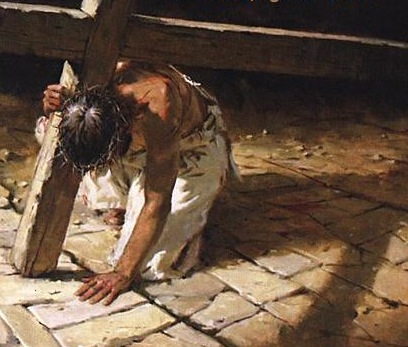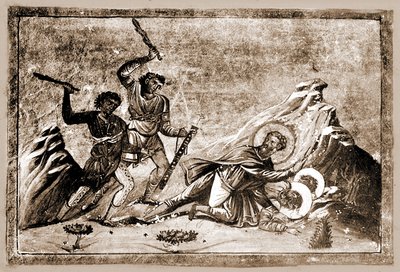Did Jesus Christ Rise from the dead?
The historical death and resurrection of Jesus Christ is the cornerstone of the Christian faith.
Fact #8: The Believers in Jesus multiplied and grew in spite of intense Persecution and Martyrdom
Growth of the Early Church
The amazing growth of the Christian church is a well established fact of history. The book of Acts provides us with an historical record of the early expansion and growth of the believers in Jesus. The birth of the church took place in the very city in which the crucifixion and the resurrection events occurred – Jerusalem. Acts 2 provides a record of the first proclamation of the Gospel of the resurrection of Christ which was given to the crowds gathered for the Jewish feast on the day of Pentecost. Peter addresses the crowds and He preaches the risen Jesus Christ as Lord and Savior. – Acts 2:22-36. The result is that 3,000 people believe and are added to the church, which at that time consisted of only 120 believers. Acts 4:4 states that the church in Jerusalem grew to 5,000 believers a short time later and that it continued to multiply -Acts 6:1. By the time of the Jerusalem church council 10-13 years later, the group of believers were described as a “multitude” – Acts 15:12. If the claims of Christ and the preaching of the resurrection by the apostles were lies, then the corrective elements within the political and religious society of Jerusalem would have quickly exposed the nature of these lies and they would have been dismissed. These parties had everything to gain by disbanding this new movement (both the Roman authorities and the Jewish leadership). If they could have produced the body of Jesus or exposed the apostles as liars they would have, yet this did not happen. It’s one thing to claim that an event took place in a city and then move 1,000 miles away and proclaim it as true with no counter corrective influences. But not so with the message of the resurrection. It was proclaimed in the very city in which the resurrection occurred and it was proclaimed as “common knowledge” – Acts 2:22-24; 3:13-17; 4:7-10; 5:31,32.So what did the religious and community leaders of the city of Jerusalem do? They chose to persecute and attempt to intimidate the believers in Jesus.There are five separate periods of persecution that the believers in Jerusalem endured as recorded in the book of Acts. These persecutions were the direct result of their preaching of the resurrection and Lordship of Jesus Christ. The final persecution that is described ends with the apostle James being killed. “Now about that time Herod the king stretched out his hand to harass some from the church. Then he killed James the brother of John with the sword. And because he saw that it pleased the Jews, he proceeded further to seize Peter also”. – Acts 12:1-3. All five of these persecutions are narrated in the following passages – Acts 4 – 1st persecution: Acts 5 – 2nd persecution: Acts 6,7 – 3rd persecution with Stephen becoming the first martyr: Acts 8 – 4th persecution: Acts 12 – 5th persecution. In spite of this intense difficulty, the church in Jerusalem added to its ranks and the influence of these believers into the surrounding areas increased – Acts 4:42; 8:4. Later, missionary endeavors into all of Asia Minor, especially under the leadership of Paul, became the norm as noted in the book of Acts.
Fear Turned into Fearlessness
The expansion of the Christian church during the first four centuries is well documented. In the fourth century it became the official faith of the Roman Empire. It is not the intention here to claim that the size and expansion of the church in its numbers or influence validates the claims of the Gospel, but rather that the evidential nature of the Gospel and the resurrection (and the work of the Holy Spirit) propelled the growth of the church. The Christian faith is absolutely based on the historical nature of the claims of Christ and this historical evidential basis of faith is firmly supported in the New Testament and in the history of the church as recorded by the early church fathers. 17For example, on the day of Pentecost, Peter addressed the crowds and stated regarding Jesus – “Him, being delivered by the determined purpose and foreknowledge of God, you have taken by lawless hands, have crucified and put to death, whom God has raised up…… he, (the prophet David) foreseeing this spoke concerning the resurrection of Christ that His soul was not left in Hades (place of the dead) nor did His flesh see corruption (the tomb). This Jesus, God has raised up of which we are all witnesses….Therefore , let all the house of Israel know assuredly that God has made this Jesus, whom you crucified, both Lord and Christ”. – Acts 2:23,32,36.It needs to be emphasized that approximately 50 days earlier, the disciples of Christ were a defeated and discouraged group. Now they were bold and fearless witnesses for the Savior. What could be the cause of this complete change? Could it be that it was the resurrection of their Lord – Jesus Christ?The crucifixion event began in the upper room where Jesus and His disciples shared their last meal together. From there they proceeded to the garden of Gethsemane. There are many theological implications of what was taking place in the garden of Gethsemane, but the Gospel records state that Jesus was suffering and was extremely sorrowful even to the point of death – Matthew 26:36-46;Mark 14:32-42; Luke 22:39-46; John 18:1-11. It is here where the Jewish rulers with a detachment of troops came and arrested Jesus and led Him away to trial and to His eventual crucifixion.
Why so much Disbelief and Skepticism?
Some of this lack of faith was rooted in their deep sense of hopelessness and hard heartedness. Some of it was also due to the appearance of Jesus’ body which was different than what they were used to seeing of Him.Jesus’ resurrection body was in some very real way altered from His previous body. In many of His appearances to individuals, they did not recognize Him at first. Although His body was real and of human flesh, it was different in some very mysterious ways. He was capable of eating food and He could be touched and handled; His wounds in His hands and feet were still present, yet He could appear and disappear instantly and could enter a room through the walls or exit out of a room as He did in the tomb. (The stone was rolled away not to let Jesus out but to let witnesses in). He could ascend to heaven and cover large distances of travel instantly, yet He was not a ghost or a spirit. If Jesus did rise again from the dead (never to die again), we would expect that His body would have to very different from the aging and dying bodies that all human beings have. This body that Jesus had was in so many ways different than His previous body that it did present a difficulty for the disciples to understand and easily recognize Him.This partly explains some of their doubt, fear and inability to easily embrace Him.
The book of Acts provides a history of the proclamation of the Gospel, and it is very evident that the disciples were completely different individuals from the ones we see presented here. They were changed. Now they were fearless and bold witnesses of their faith in Christ. What could have caused this change? The appearances of the resurrected Jesus.Martrydom
This commitment to the truth was evident in the willingness of these disciples of Jesus to lay down their lives for the testimony that they confessed regarding Jesus Christ and His resurrection. Reliable church history tells us that at least 11 of the key leaders and apostles of Jesus died for their witness for Christ.